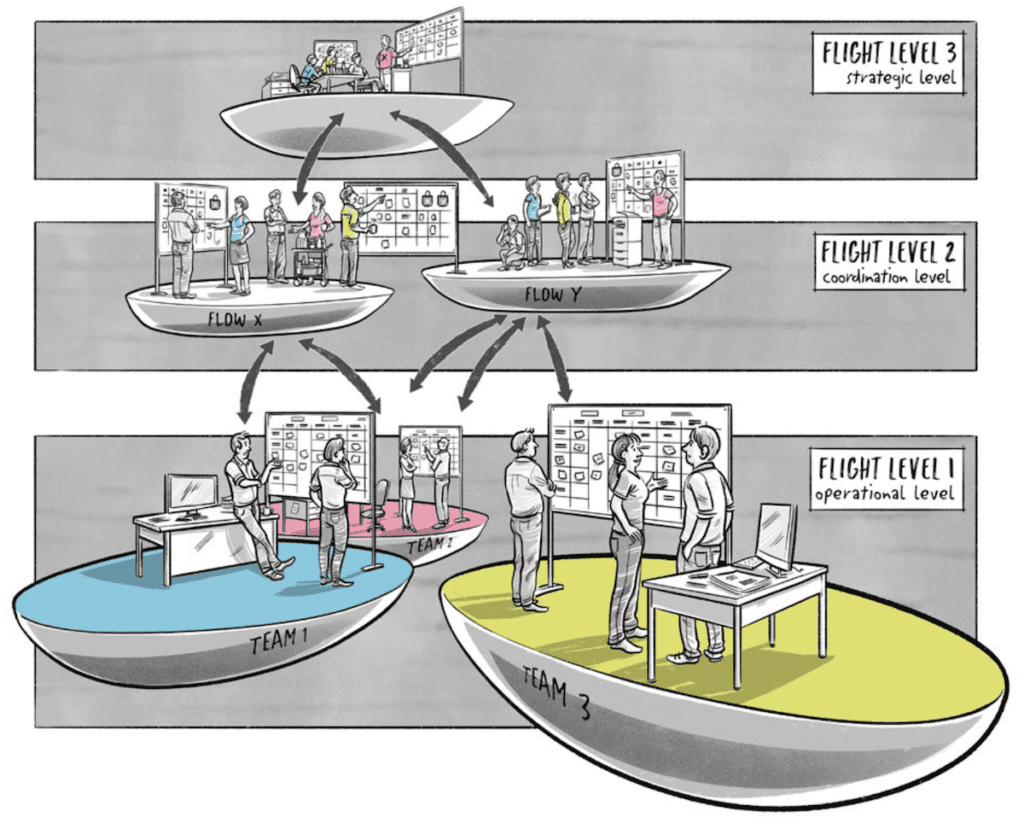Recently, I’ve been reflecting on the key considerations when implementing Flight Levels in an organization, especially a large one. In essence, this pertains to how Flight Levels aligns with scaling.

Here’s an improved list of insights I’ve gathered:
- The Flight Levels Framework: This is a comprehensive model aimed at assisting organizations to grasp and enhance their working systems.
- Understanding Context: Recognizing and appreciating the distinct environments people operate in is critical. It’s important to see how these tie into the overarching strategies and goals.
- Enhancing Current Frameworks: Flight Levels can amplify the effectiveness of existing frameworks, such as SAFe, OKRs, etc., by honing in on system improvements.
- Navigating Large Organization Challenges: Adopting new methods in vast entities demands bravery, introspection, and openness to fresh approaches.
- A Shift in Perspective: Flight Levels redefine how we perceive working systems, underlining the importance of interactions, connections, and interrelationships within entities.
- Prioritize Understanding Over Action: Instead of solely emphasizing on implementation, there’s a need to discern and reflect on what’s genuinely effective in the system.
- Avoiding “One-Size-Fits-All”: Simply duplicating strategies from other successful organizations or using a generic approach might result in operational inefficiencies.
- Beyond a Mechanistic View: Organizations are complex, not just mechanistic entities. While there might be elements that need fixing, it’s paramount to see the bigger picture rather than just rolling out “quick-fix” solutions.
- Embracing Continuous Learning and Engagement: There’s immense value in constant learning, recounting experiences, and actively participating in the community to truly grasp and utilize the Flight Levels concepts.
- Holistic System Insight: Flight Levels present a framework to understand the system in its entirety, highlighting gaps or interaction issues, thereby shedding light on areas for systemic enhancement.
- Rethinking Mere Execution: Merely focusing on task completion without a deeper understanding can introduce inefficiencies. Striking a balance between doing and comprehending is key.
With a keen understanding and application of these principles, organizations can strategically decide how to scale and refine their operations using the Flight Levels approach.
Curious about Flight Levels? Please, drop a comment or reach out directly with your questions.
